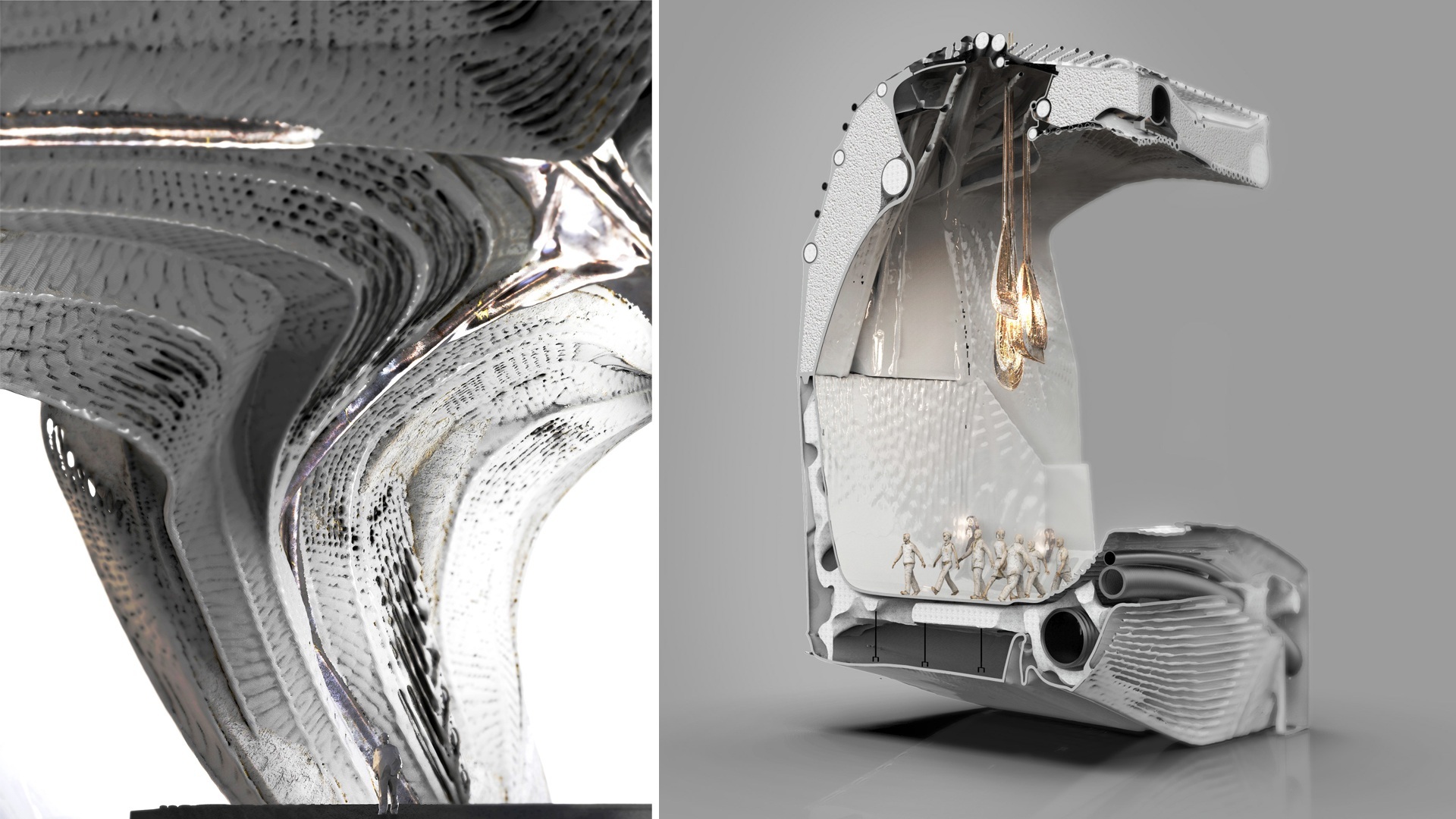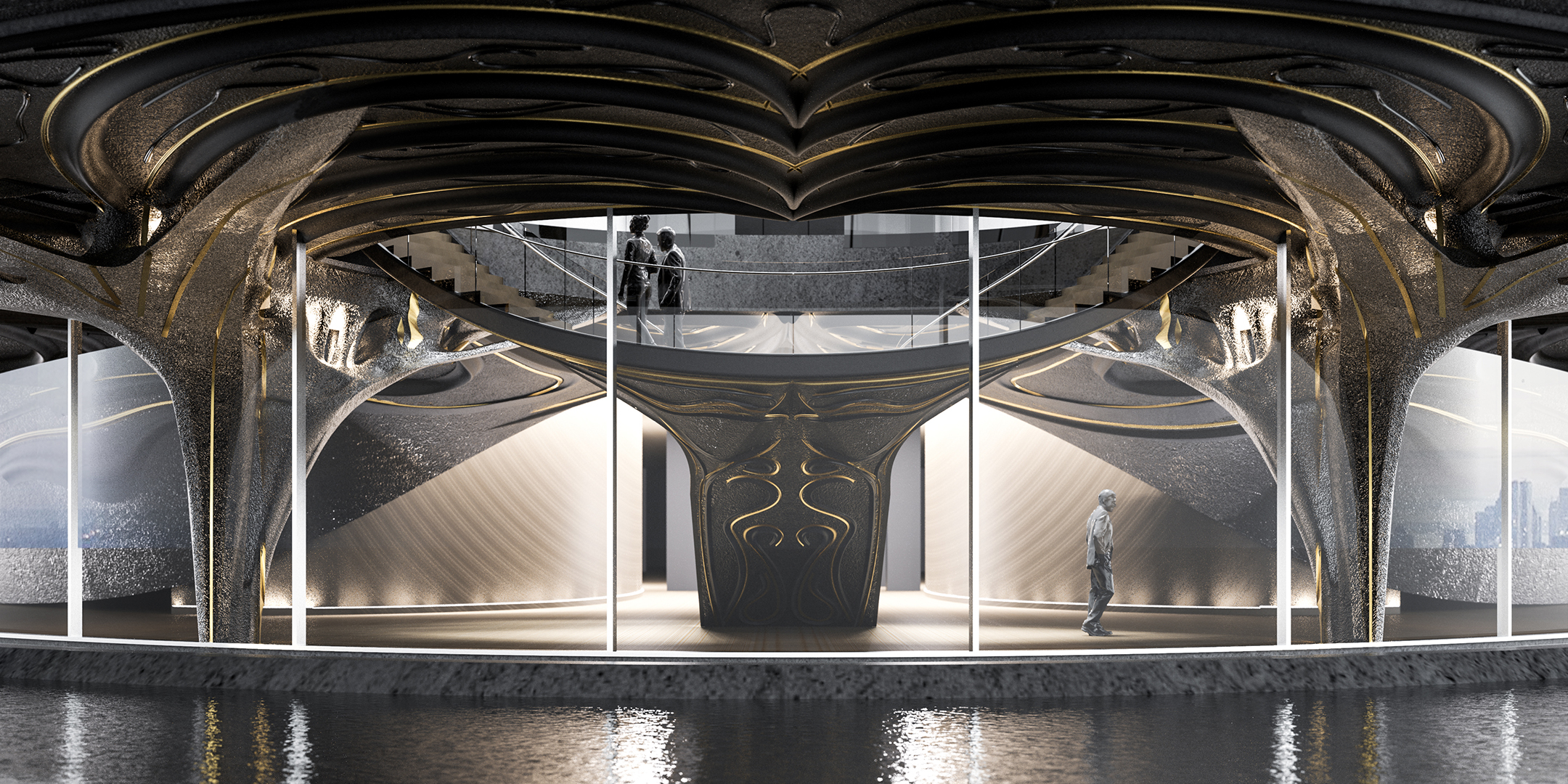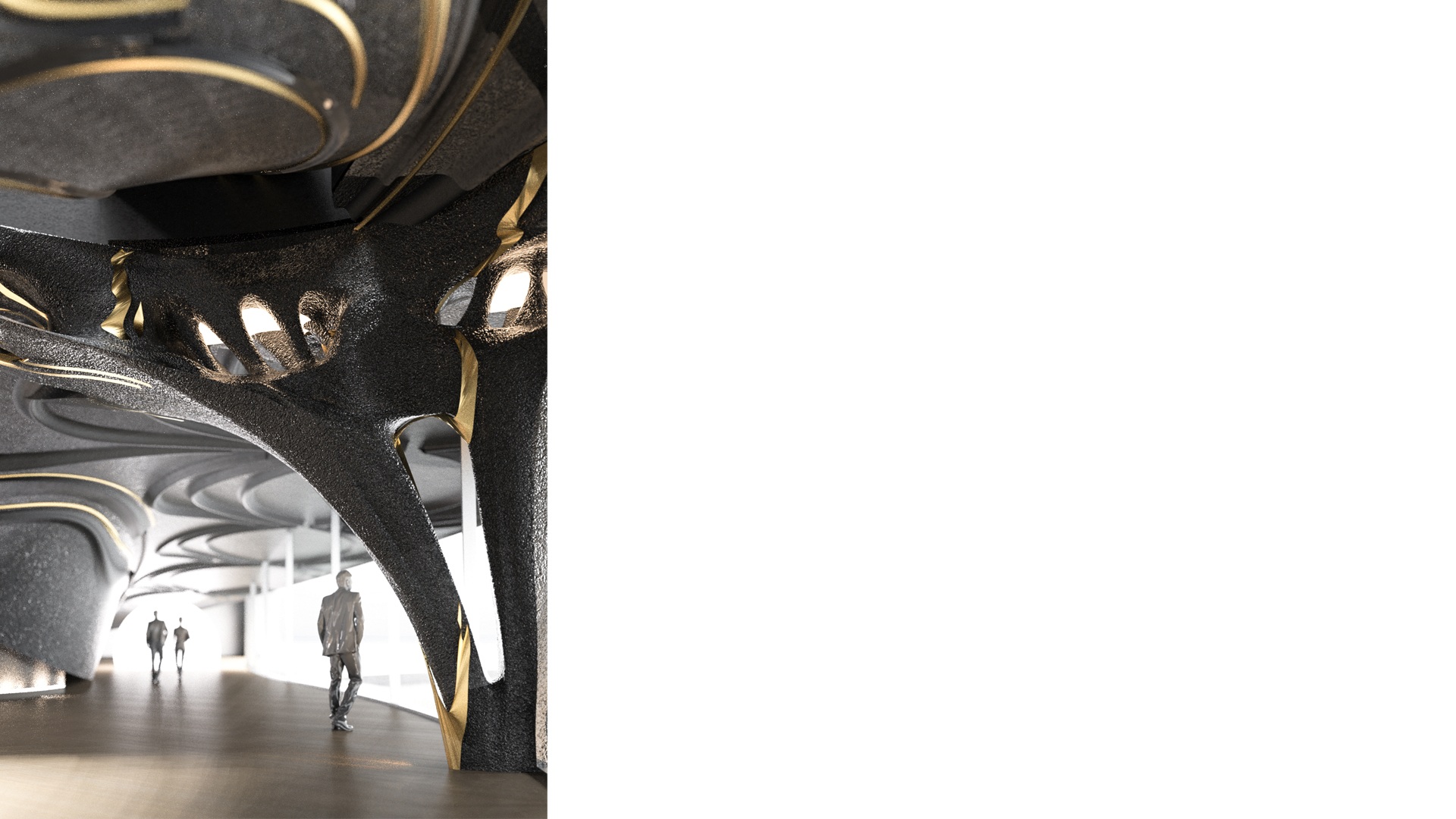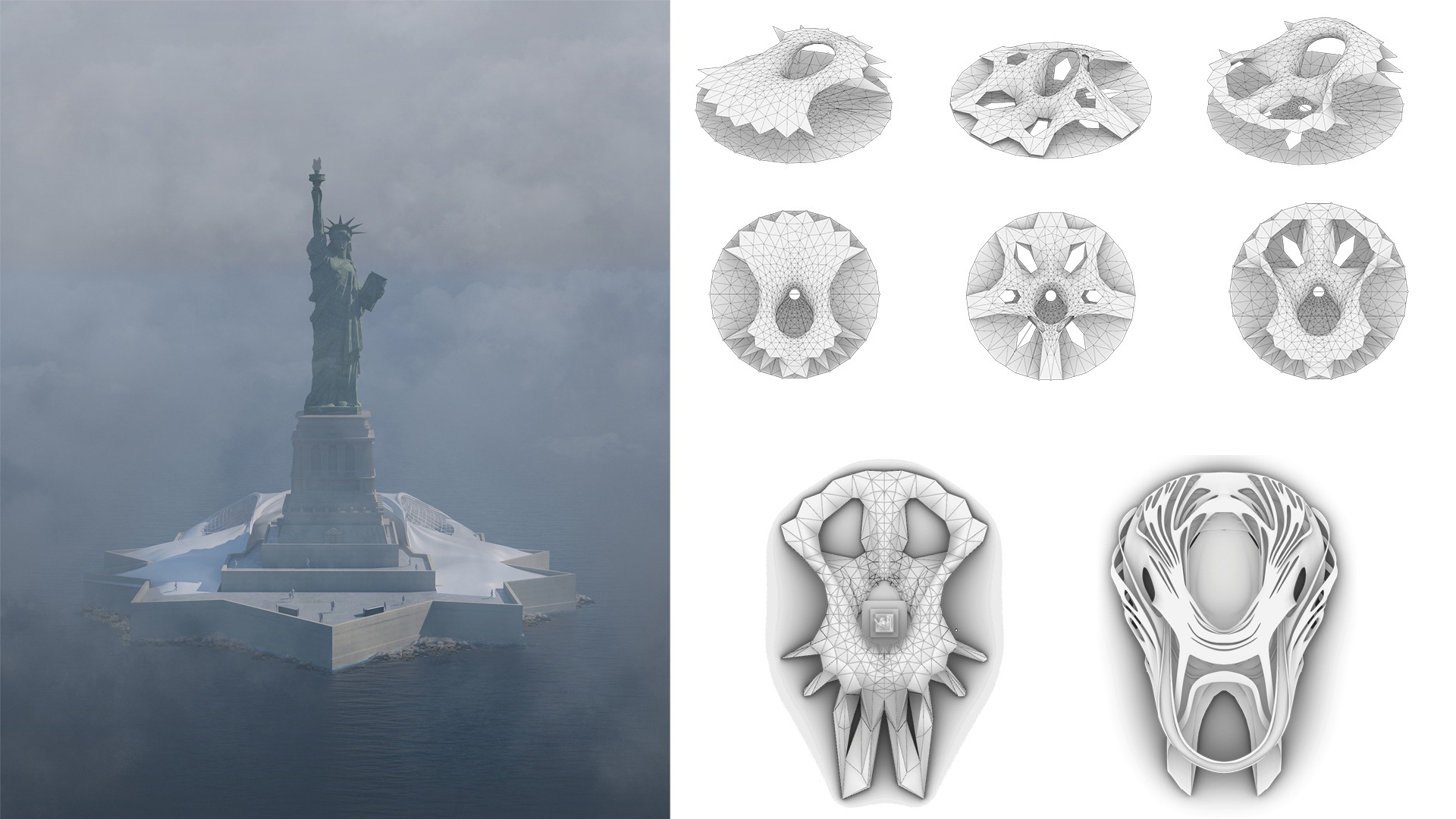Intrinsic Matter: Space, Structure and Ornament
/Studio Robert Stuart-Smith, Weitzman School of Design | University of Pennsylvania
Engineering Consultant: Wolf Mangelsdorf ( BuroHappold )
TA: Nicole Bronola
602 M.Arch Design Studio
Students: Yinying Chen, Sien Hang Cheng, David Forero, Ian Hoi Yin Lai, Hongyu Lin, Akarsh Sabhaney, Chengyang Wang, Tsui-Lun Wang, Xinyu Wang, Jiachang Ye, Tian Zhang, Neng Zhu,
Recent developments in material technologies and robotic fabrication have enabled the design of novel hybrid objects that integrate performance and aesthetic conditions in complex ways. This challenges the designer’s approach to the scale and variability of geometry within building design, and the relationship between structure, material use, and design expression. From monolithic on-site construction to the prefabrication of elements or formwork, architecture cannot be designed in the same manner as a product such as a shoe — architectural order must rise to additional challenges posed by the scale and complexity of the built environment. Architecture has been conceived historically as a composition of elements. Classical architecture expressed elements and proportions that were not necessarily a direct expression of their component parts (a column is typically an ensemble of stone modules) yet conveyed a unity across the scale of a building.
Pier Luigi Nervi extended these considerations into architectural parts, recast as bespoke elements, each with their own design criteria and expression and ranging in scale from columns to entire roof shells. Nervi’s Isostatic Slabs provide a seminal example of designs that are both structurally performative and highly articulated. Nervi’s slabs are a recognition that design expression may be developed in a multitude of highly ornate ways, and still embody structural principles. Matter comes partially before yet also in dialogue with structure, as opposed to arguing for an optimal structure to impose a singular form. Nervi’s relevance today is re-enforced by the recent proliferation of Topological Structural Optimization (TSO) methods which allow designers to consider the organization of matter at multiple scales within buildings, and to design geometry in such a way as to align structural and design concerns. This does not imply that structural solutions necessarily dominate design decisions, but rather that a messy dialogue can be explored, where both might contribute towards meaningful design and aesthetic goals.
Intrinsic Matter explored the integration of space, structure and ornament within design proposals that investigated a variable scale and intensity of design articulation within both element-scale and building scale conditions. This design exploration was pursued adjacent to one of world’s most ambitious works — the Statue of Liberty. Designed by French sculptor Frédéric Auguste Bartholdi, the statue was a gift to the US from France as a gesture of friendship, in recognition of the US’s successful War of Independence. The statue is a building-scale sculpture, structurally engineered by Gustav Eiffel, it is arguably one of the largest bespoke and most formally articulated works of architecture, and a suitable neighbor to the studio’s designs. This year a new visitor’s centre will open on Liberty Island. Designed by FX Collaborative the centre will house the original liberty torch and provide an educational experience of the Statue of Liberty. The studio explores alternative solutions to the visitor’s centre by rethinking the role and design of Liberty Island itself, the removal of its cluttered support buildings, and the establishment of a dialogue between the new centre and the Statue of Liberty.






